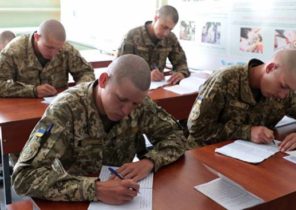Almost next to the Arctic tundra, on the great plains, occupying most of Northern Russia, something that previously seemed impossible, are engaged in the cultivation of soybean.
This possibility is a consequence of what is happening and has been for many years the increase in temperature that results in melting of permafrost and the transformation of this land into fertile soil. Today agronomist Gennady Bochkovsky helps to promote the sowing area of soybeans to a new stage, trying to establish whether this culture to take root in the Northern districts of the Moscow region. Yet, according to him, the results are encouraging.
“Sprouts have appeared and look great,” — said Bochkovsky, employee at agricultural company “Toamasina” (TulamashAgro), which is working to replace the peas to soybeans on the area of 1400 hectares.
Soybeans in Russia embody a trend around the world: the increase in temperature promotes the sowing of some crops in the North pole, in areas where there used to grow them was impossible. In the United States, North Dakota has become the main region for the cultivation of grain, and in the United Kingdom the rapidly spreading cultivation of wine grapes.
“The opportunity to observe climate change — temperature increases, and the culture here had not grown, it is now possible to successfully grow,” — said Bochkovsky.
While Russian farmers engaged in cultivation of soybean see some benefit from the warmer weather, this same phenomenon causes chaos in the global system of food production. This year drought has affected the harvest in some parts of Uruguay, New Zealand, Europe and Vietnam. Even Russia and the rest of the black sea region has faced in recent years with the adverse effects of changes in the weather, no rain now threatens the grain harvest in the region. According to UN experts, climate change is one of the factors of concern in the field of ensuring the population with food, and that means that scheduled for 2030, the goal to eliminate hunger will not be realized.
All this comes at a time when the pandemic coronavirus disrupted the functioning of supply chains, and food can’t be delivered where they are needed. The period of extreme weather conditions can destroy crops, may force some countries to adopt more protectionist policies in food exports that can create a ripple effect throughout the global trade. Concern about access to wheat and other major agricultural products has forced countries such as Kazakhstan and Russia earlier this year to impose export restrictions, although most countries have recently lifted such restrictions, and, apparently, grains and games.
In Russia, the farmers took advantage of the situation and began to grow income-generating soybeans. This oilseed crop was processed into animal feed, and demand remains at a high level in connection with growth of a livestock of cattle. In fact, Russia still imports about 1 million metric tons of soybeans, so there is still opportunity to increase local production.
In 2019, in Central Russia, sowing of soybeans was occupied by 1.1 million hectares, that is 18 times more than in the previous decade and corresponds to approximately 7% of the arable land in this part of the country.
“Russia needs more soybeans, and from an economic point of view, it is better to grow them here,” — said Sergey Zelentsov, head of the laboratory of breeding and seed production of soybeans in the all-Russian research Institute of oil crops by the name Pustovoit.
Newly bred varieties of soybeans can grow and ripen if the temperature rises to 10 degrees Celsius (50 degrees Fahrenheit) for a fairly long period of time, said Margarita Roman, a specialist in the cultivation of soybeans Chuvash research Institute of agriculture. In the Northern latitudes for its maturation must have about 100 days of favorable weather.
Productivity has doubled
According to the Russian government over the last decade, soybean yields increased two times, and the production as a whole increased four times. This also contributed to improved seeds, which appeared on the market.
However, there are tricks you need to know for the cultivation of soybeans in new areas.
Plants should not be in the shadow of hills or trees, they need to get more sunlight, said Bochkov, an agronomist from Moscow region. It is also necessary to align the fields — otherwise, harvesters can leave in the field a certain amount of crop, since soybeans can is only 4 inches off the ground.
Zelentsov mentioned the research Institute is confident that the increase in soybean crops will continue, he is already considering even more incredible options. His Institute together with the Siberian specialists working on the creation of such varieties of soybeans that can be grown even where there is a two-meter layer of permafrost.
“I was a pessimist concerning the cultivation of soybeans in Central Russia, but now I see that was wrong, — said Dmitry Rylko, General Director of the Institute for agricultural market, known in Moscow as a consulting centre ICAR. — I underestimated the magnitude of climate change. I underestimated the potential of crop production”.







